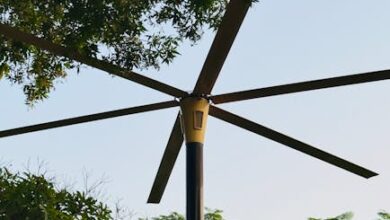Apple’s Expanding Green Footprint Across Europe

In an era where environmental consciousness increasingly shapes corporate strategy, Apple continues to push the boundaries of corporate sustainability. The tech giant has once again made significant strides in its global renewable energy efforts, announcing a substantial expansion of its clean energy portfolio in Europe. This commitment isn’t just about powering its own data centers; it’s a comprehensive strategy extending to its vast supply chain and customer usage worldwide. This latest move signals a significant step towards a greener future for one of the world’s most influential companies, with more ambitious plans underway, particularly in China.
Apple’s Expanding Green Footprint Across Europe
Apple recently announced the addition of 650 megawatts (MW) of new renewable energy capacity across Europe. This monumental investment underscores the company’s dedication to powering its operations and supporting its environmental goals across the continent. These projects range from large-scale solar farms to wind energy installations, strategically located to feed clean power directly into local grids.
The impact of this expansion is far-reaching. It helps to offset the energy consumption of Apple’s corporate offices, retail stores, and data centers in European countries. By investing in these projects, Apple not only reduces its own carbon footprint but also contributes to the decarbonization of the broader European energy sector, fostering growth in the green economy.
This initiative builds upon Apple’s existing commitments and achievements in Europe, where it has already made substantial investments in renewable energy. The new 650 MW capacity demonstrates a scaling-up of these efforts, reflecting a proactive approach to meeting its ambitious climate targets. These projects often involve partnerships with local energy developers, creating jobs and stimulating local economies while accelerating the transition to clean energy.
Such large-scale commitments are crucial for meeting the increasing energy demands of a growing digital economy sustainably. Each megawatt of renewable power added reduces reliance on fossil fuels, contributing directly to cleaner air and a more stable climate. Apple’s European strategy serves as a model for how major corporations can integrate environmental responsibility into their core business operations.
Powering a Greener Supply Chain: The China Connection
While Europe sees significant immediate gains, Apple’s vision for renewable energy extends globally, with a critical focus on its manufacturing heartland. Apple is adding renewable power to offset customer charging and support its operations, including third-party manufacturing in China. This comprehensive approach recognizes that the environmental impact of a global company goes far beyond its direct energy consumption.
China presents a unique and substantial challenge, given the immense scale of Apple’s third-party manufacturing facilities located there. Addressing the energy needs of these vast operations requires innovative strategies and significant investment. Apple has been actively engaging with its suppliers, providing technical assistance and financial incentives to help them transition to 100% renewable energy for their Apple-related production.
The goal is not just to build new renewable energy projects, but to foster an ecosystem where suppliers are empowered to make their own transitions. This includes everything from installing rooftop solar panels on factories to investing in utility-scale solar and wind projects across China. The collective effort aims to reduce the carbon emissions associated with the production of millions of Apple devices each year.
This initiative is particularly significant because it addresses a large portion of Apple’s overall carbon footprint—Scope 3 emissions, which arise from its supply chain. By focusing on third-party manufacturing in China, Apple is tackling the issue at its root, pushing for systemic change within its extensive network of partners. This kind of supply chain decarbonization is critical for any global corporation aiming for true carbon neutrality.
Driving Innovation in Sustainable Manufacturing
Beyond simply adding megawatts, Apple’s approach in China involves driving innovation. The company often invests in and shares best practices for energy efficiency and renewable energy procurement. This collaborative model helps suppliers not only meet Apple’s standards but also develop their own robust sustainability programs that can benefit their entire business.
The long-term vision includes a vast network of suppliers powered by 100% clean energy, transforming the manufacturing landscape. This creates a ripple effect, encouraging other companies within the tech sector and beyond to adopt similar responsible practices. Ultimately, this leads to a more sustainable global economy where technology production is less resource-intensive and environmentally damaging.
The Global Drive Towards Carbon Neutrality
These investments in Europe and the ongoing efforts in China are integral components of Apple’s broader, ambitious goal: to be carbon neutral across its entire value chain by 2030. This encompasses not only its direct operations but also its global manufacturing supply chain and the full lifecycle of every product it sells. Achieving this requires a multi-faceted approach, with renewable energy at its core.
Apple’s commitment extends to developing innovative solutions and advocating for policy changes that support a cleaner energy grid worldwide. The company actively participates in industry initiatives and partnerships aimed at accelerating the global transition to renewable energy. This holistic strategy recognizes that individual corporate actions, while important, are most effective when they contribute to a larger, systemic shift.
The scale of Apple’s ambition sets a high bar for other companies, demonstrating that it is possible for a global enterprise to grow while simultaneously reducing its environmental impact. From product design to packaging, to manufacturing and recycling, every stage is being scrutinized for opportunities to lessen its footprint, with renewable energy forming the backbone of this transformation.
Conclusion
Apple’s latest expansion of 650 megawatts of renewable energy in Europe, coupled with its intensive efforts to green its supply chain in China, represents significant progress towards its audacious carbon neutrality goals. These initiatives demonstrate a profound understanding that true sustainability requires a holistic approach, addressing emissions from every part of its operations and product lifecycle.
As Apple continues to invest in solar, wind, and other clean energy technologies across continents, it reinforces its position as a leader in corporate environmental responsibility. These actions not only contribute to a healthier planet but also inspire other businesses to follow suit, proving that economic success and environmental stewardship can, and must, go hand in hand. The future of technology is increasingly green, and Apple is certainly driving that charge.





